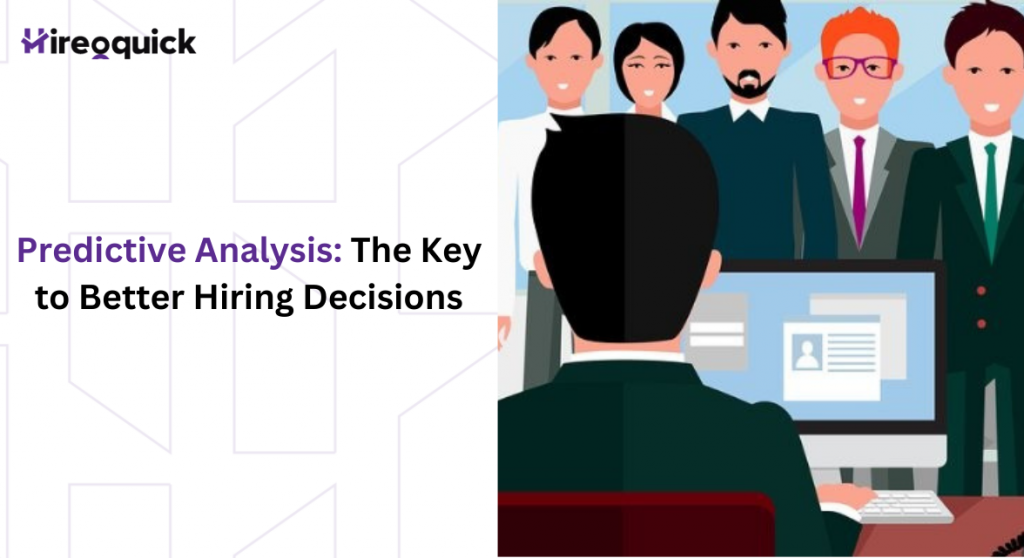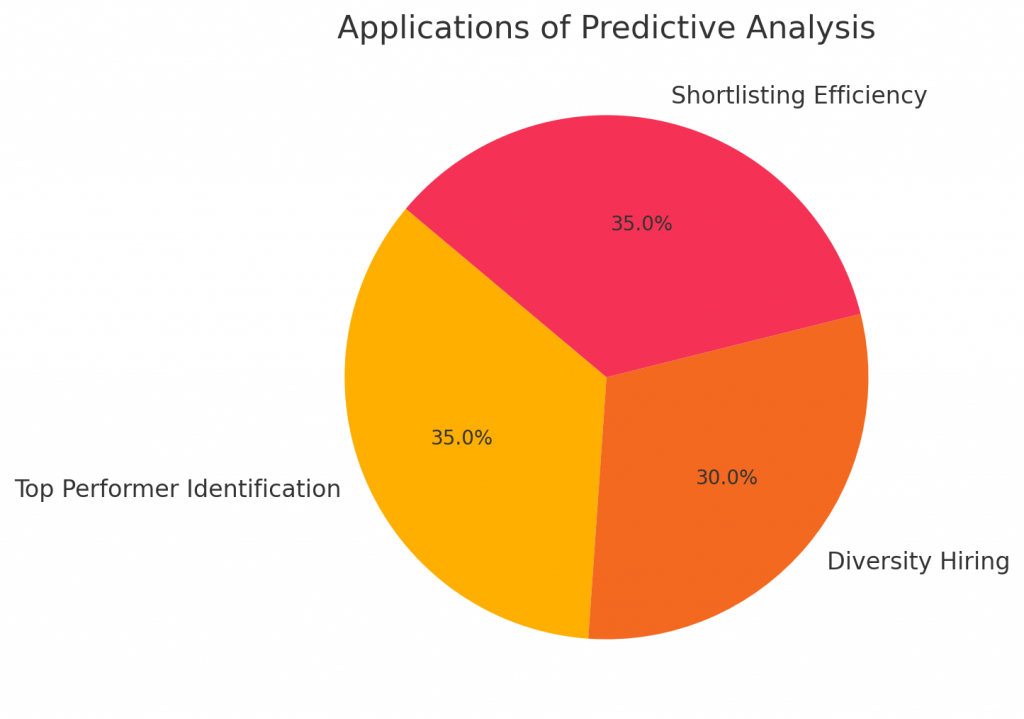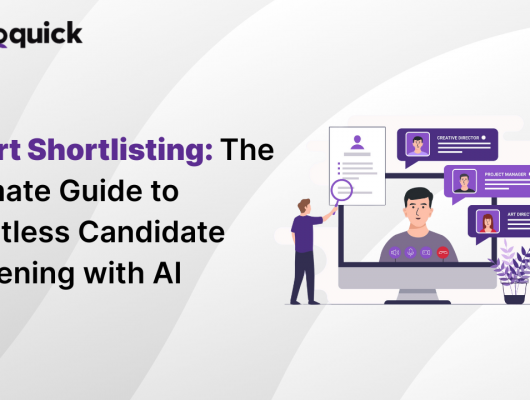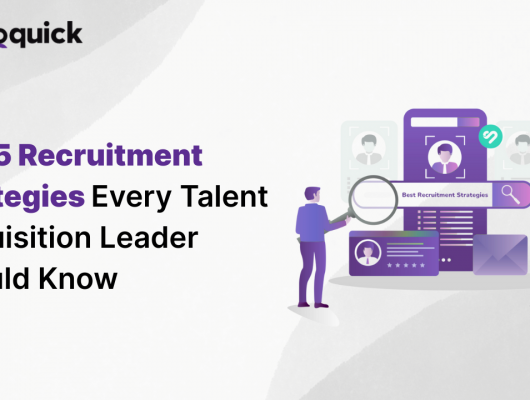
Predictive analysis is changing the way companies approach hiring. It helps recruiters and HR teams use data to make smarter decisions, improve hiring quality, and save time. This technology analyzes patterns from past hires to predict which candidates are likely to succeed. For anyone involved in talent acquisition, predictive analysis is quickly becoming a top recruitment trend.
In this blog, we’ll break down what predictive analysis is, why it’s essential for hiring, and how platforms like HireOquick use it to improve the hiring process.
What is predictive analysis?
Predictive analysis in hiring means using past data to make future hiring decisions. It relies on algorithms and data models that analyze patterns to predict what kind of candidates will perform well. For instance, if employees with certain skills and backgrounds tend to perform better in a role, this will highlight candidates with similar traits.
Simply put, it’s a data-driven way to improve hiring quality, reduce turnover, and make talent acquisition faster and more efficient.
Why This Approach is Important for Hiring
It brings many benefits to recruitment. Here are a few of the biggest ones:
- Better Quality of Hire
Identifying the skills, experience, and personality traits of successful employees It helps recruiters find candidates who are likely to thrive in the role. This leads to better hires and a stronger team. - Faster Hiring Process
It speeds up hiring by helping recruiters focus on candidates who fit well. This saves time, especially when companies are hiring for high-demand positions. The faster you can identify the right candidates, the better your talent acquisition process becomes. - Reduced Employee Turnover
High turnover is costly and disruptive. it helps to identify candidates who are likely to stay with the company long-term. This helps reduce turnover and creates a more stable workforce. - Data-Driven Decision Making
It uses data instead of guesswork, making the hiring process fairer and less biased. Decisions are based on objective insights rather than just personal opinions. - Better Workforce Planning
With predictive analysis, companies can plan for future hiring needs by looking at trends and patterns. For example, if you know certain positions often need new hires at specific times of the year, predictive analysis helps you prepare in advance.
How HireOquick Uses Predictive Analysis
HireoQuick is a recruitment platform that uses predictive analysis to make hiring easier and more effective. By analyzing candidate data, HireoQuick’s platform can predict which candidates are the best fit for a role based on their skills, experience, and likely job performance. This not only improves the quality of hires but also saves time for recruiters.
HireoQuick also provides insights into recruitment trends, helping HR teams understand which hiring strategies are working. By showing data on candidate performance and long-term success, HireOquick allows companies to adjust their talent acquisition approach based on real results.
Applications in Recruitment
Predictive analysis has many uses in recruitment, especially in these areas:
- Finding Top Performers: For roles in customer service or sales, predictive analysis can help identify candidates with qualities that lead to high performance, such as resilience and communication skills.
- Diversity Hiring: Predictive analysis can help companies with diversity hiring goals by identifying and reducing biases. This allows for a fairer hiring process and ensures a diverse talent pool.
- Efficient Shortlisting: Predictive tools help recruiters create a shortlist of candidates most likely to succeed, making it easier to focus on those with the best potential.

Steps to Implement Predictive Analysis
Implementing predictive analysis doesn’t have to be complicated. Here are a few steps to get started:
- Collect Data
Gather data on your current and past hires, including job performance, skills, and reasons for turnover. This data will help build accurate predictive models. - Find Patterns
Look for patterns in the data that show why certain hires were successful. For example, are there specific skills or experiences that make employees excel in certain roles? - Build Predictive Models
Use a tool like HireoQuick to create predictive models based on your data. These models help score candidates based on their fit with the job requirements. - Monitor Results
Track how well the predictive models work and adjust as needed. For example, if the model is not identifying top performers as expected, refine the criteria to improve accuracy.
Future of Predictive Analysis in Hiring
The role of predictive analysis in hiring will only continue to grow. Here are some trends to watch for:
- AI-Driven Analysis: As AI becomes more advanced, this analysis will offer even more insights into candidate success and company fit.
- Personalized Hiring: Personalizing the hiring process can also improve the candidate experience. This keeps candidates engaged and increases their interest in joining your company.
- Expansion to Employee Development: analysis isn’t just for hiring; it can also help with succession planning and development by identifying employees with high leadership potential.
Conclusion
It is transforming recruitment and talent acquisition by using data to improve hiring quality, speed up processes, and reduce turnover. Platforms like HireOquick make it easy to use predictive analysis, helping companies stay ahead with recruitment chatbots and make smarter hiring decisions.
Whether you’re an HR manager or recruiter, adopting this in your hiring process can provide long-term benefits and give you an edge in today’s competitive job market. Embracing predictive analysis is not just a trend; it’s a step toward building a strong, stable, and effective workforce.
Predictive analysis is changing the way companies approach hiring. It helps recruiters and HR teams use data to make smarter decisions, improve hiring quality, and save time. This technology analyzes patterns from past hires to predict which candidates are likely to succeed. For anyone involved in talent acquisition, predictive analysis is quickly becoming a top recruitment trend.





